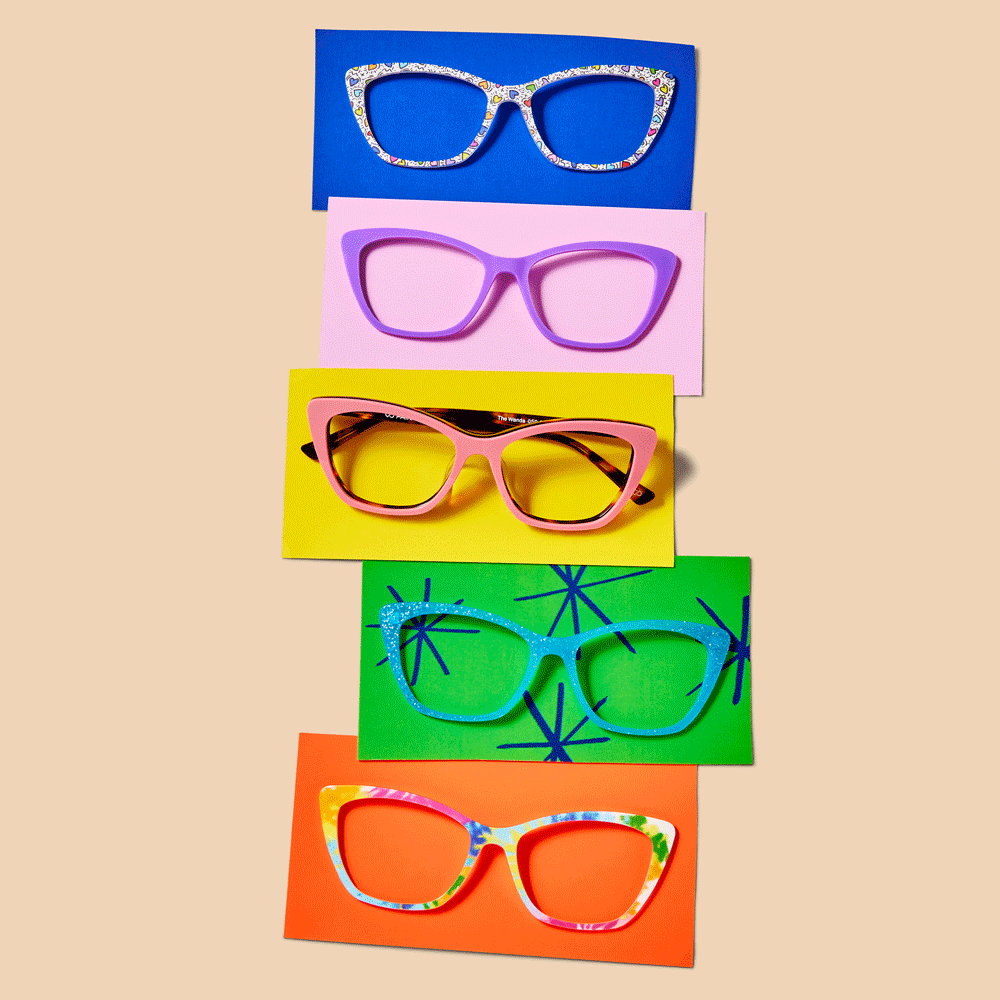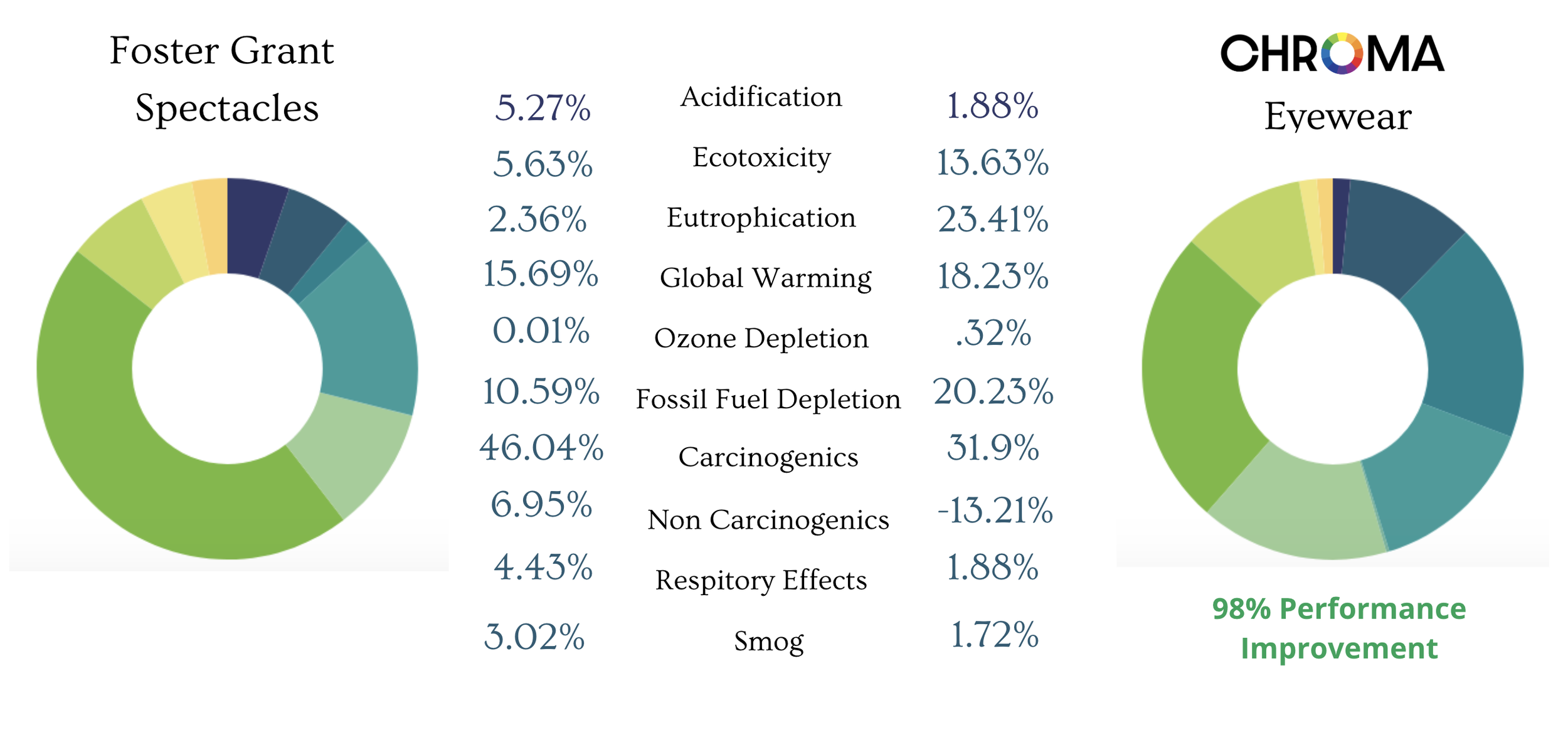
chroma
redefining the vision of your world.
IDA design award nominee, 2024
mindful consumption: Chroma's approach encourages customers to invest in a single, high-quality, and versatile pair of glasses, promoting a more sustainable and mindful approach to fashion and accessories.
April- May 2024
Team: Reva Naik, Mona Hamdy, Valentina Garcia,
Role: Sustainable Strategist, Service Design, Branding & Product Design
Timeline: 6 weeks

what i did:
as part of an interdisciplinary team, I led:
primary research: conducted in-depth market analysis, user interviews, and lifecycle assessments to identify pain points and opportunities in the eyewear industry.
ideation: generated creative solutions focusing on circular design principles, modularity, and user personalization.
material research: explored eco-friendly materials, including recycled PLA, bio-based acetate, and innovative magnetic hinges.
product design: designed customizable eyewear frames with modular components for easy repairs, replacements, and personalization.
-
Methodologies
User Journey Mapping: Designed seamless customer experiences, from discovery to end-of-life recycling.
Persona Development: Crafted personas like Soraya, a sustainability-conscious fashion enthusiast, to guide design decisions.
System and Ecosystem Mapping: Visualized the lifecycle and stakeholder network of Chroma eyewear to identify opportunities for circular interventions.
Prototyping and Testing: Iteratively refined designs to ensure feasibility, functionality, and user satisfaction.
-
Methodologies
Circular Design Thinking
Focused on designing eyewear and processes that minimize waste, enable easy repairs, and facilitate end-of-life recycling.
Ensured modularity for component reuse and materials recovery.
2. Lifecycle Assessment (LCA):
Evaluated the environmental impact of materials and processes across the entire product lifecycle, from raw material extraction to disposal.
Used LCA insights to select low-impact materials like recycled PLA and bio-based acetate.
3. Cradle-to-Cradle Design:
Ensured all materials could be safely returned to the environment or repurposed, creating a closed-loop system.
Designed take-back programs to recover and recycle frames, lenses, and magnets.
4. Eco-Design Strategies:
Adopted the Okala Design Strategy framework, focusing on:
Low-impact materials and manufacturing.
Optimizing product lifetime through repairability and modularity.
Efficient distribution via localized 3D printing.
5. Material Innovation:
Explored sustainable alternatives like:
Recycled PLA for frames.
Photochromic inks to reduce the need for multiple pairs.
Upcycled fast fashion waste for cases and cleaning cloths.
6. Design for Disassembly:
Incorporated magnetic hinges and modular parts, enabling easy replacement, repair, and recycling.
Simplified the separation of components to facilitate end-of-life processing.
7. User-Centered Sustainability:
Integrated sustainability features seamlessly into user experiences, ensuring eco-friendly choices felt natural and beneficial.
Encouraged mindful consumption by promoting durable, customizable eyewear over fast fashion alternatives.
8. Hyperlocal Production:
Leveraged 3D printing to reduce material waste, emissions, and overproduction by manufacturing eyewear on demand at local hubs.
9. Upcycling:
Repurposed discarded fast fashion materials into durable and functional accessories like cases and cleaning cloths, diverting waste from landfills.
10. Mindful Consumption Campaigns:
Designed awareness initiatives highlighting the environmental benefits of choosing Chroma, fostering a culture of conscious consumption.
strategy & methodologies

project objective: to design an innovative eyewear solution that integrates cutting-edge technology, sustainable materials, and a circular business model, minimizing environmental impact while offering users a bespoke, versatile experience.
Business and Sustainability: A Vision for the Future:
Chroma is a testament to how business and sustainability can intersect to deliver high-value, eco-friendly products. By addressing environmental challenges with innovative design, Chroma sets a precedent for sustainable practices in the fashion accessory sector.
“Chroma uses experimental color-changing pigments from MIT, optical scanning technology, and recyclable 3D printing polymers for frame building. It is zero-waste design at its most bespoke and versatile, proving that business and sustainability can intersect in every sector.”
environmental impact
Zero-Waste Production: Hyperlocal 3D printing and modular components reduce overproduction and extend product life.
project takeaways:
Chroma embodies my ability to blend design thinking, sustainability principles, and service design methodologies to create impactful, user-centered solutions. It demonstrates my commitment to driving innovation in circular design and my expertise in crafting scalable strategies for a sustainable future.
Color-Changing Frames
Utilizes photochromic pigments from MIT, enabling UV-activated color customization. Users can adapt their frames to match their style and mood, eliminating the need for multiple pairs.
Custom Fit and 3D Printing
Leverages smartphone-enabled facial scanning to create custom 3D molds for each user.
Frames are manufactured using recyclable 3D printing polymers, minimizing material waste and production emissions.
Modular Design for Circularity
Magnetic hinges allow for easy repairs and replacements, extending the product's lifespan.
A comprehensive take-back program ensures frames, lenses, and magnets are recycled or refurbished.
Eco-Friendly Accessories
Cases and cleaning cloths crafted from upcycled fast fashion waste, promoting mindful consumption.
key features
Circular Economy: Take-back programs and recyclable materials close the loop, minimizing landfill waste.
Mindful Consumption: Encourages users to invest in durable, customizable eyewear instead of fast-fashion alternatives.
life cycle analysis:








